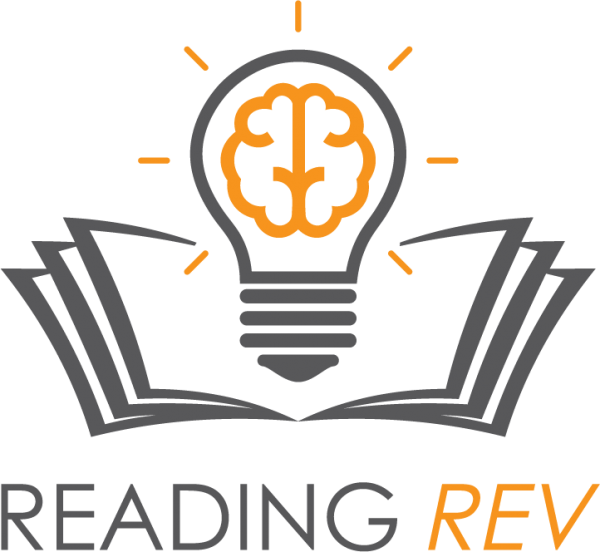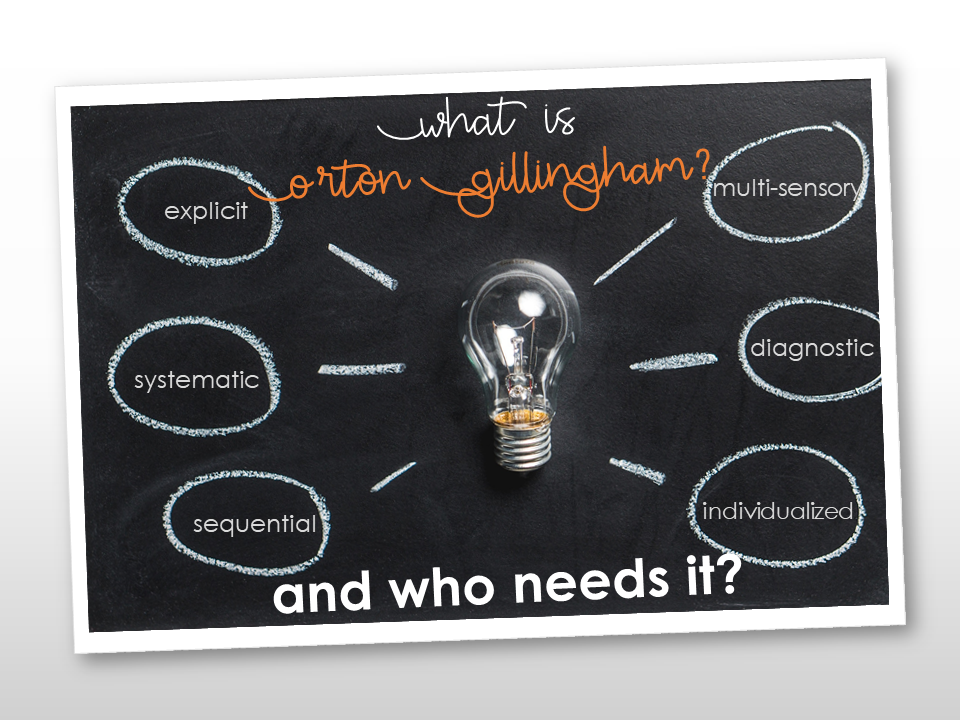What is Orton Gillingham and Who Needs It?
Structured Literacy & Orton Gillingham
Structured Literacy is the WHAT and HOW of teaching reading. It is a system of instruction that begins with the micro and builds to the macro. Structured Literacy systematically and explicitly teaches reading from the sound/word level to the comprehension of complex sentences and paragraphs.
The approach focuses on phonology or the study of sound. It then matches those sounds to symbols. This is phonics. The sequence then progresses to syllabication. Teaching syllables types allows larger words to be broken down into more manageable chunks. Then, students learn morphology: the meaning of words. Words can be broken down into units of prefixes, root/base, and suffixes. These affixes change the meaning of words in a predictable way, and readers can begin to understand the meaning of complex words. Syntax, or the patterns of words in sequence and function, is then taught. And finally, semantics, or creating overall comprehension or meaning-making is addressed.
Structured Literacy does not leave learning these elements of literacy to chance. This approach is systematic and cumulative. Content is taught in a prescribed sequence that follows a logical and developmentally appropriate order. Basics are taught and lessons build on a student’s previous knowledge.
One of the most important facets of Structured Literacy is that skills and components of literacy are explicitly taught. Direct instruction is required, and children are not left on their own to deduce concepts or figure it out.
Lastly, Structured Literacy is diagnostic. The teacher must be educated and masterful in literacy instruction. They must understand how to assess a child in order to individualize instruction. Teachers must know how to respond and intervene if a student is not acquiring the necessary skills.
Orton-Gillingham is an approach to teaching reading that is hugely beneficial for those who struggle with traditional visual reading instruction. It was developed starting in 1925 by a neurologist and pathologist named Dr. Samuel Orton and an esteemed educator and psychologist Anna Gillingham. This approach teaches reading at the word level. It allows students to crack the reading code by giving instruction on how letters are connected to sound in language. This powerful approach can actually help restructure the neural pathways in the brains of struggling readers.
The components of Orton Gillingham are:
The What:
o Explicit and direct instruction
o Systematic and structured
o Sequential and cumulative
o Multi-sensory
o Individualized
o Diagnostic and prescriptive
o Repetitive
Sound familiar? Dr. Samuel Orton and Anna Gillingham were ahead of their time! Or, we are finally catching up! The approach that has recently become the latest educational trend was created almost 100 years ago! Furthermore, it is just another way to talk about Structured Literacy.
Orton Gillingham is not a curriculum. Orton Gillingham is not a program. Orton Gillingham can not be copyrighted or branded.
It is a philosophy of how to teach reading.
The How:
Parts of an O.G. Lesson
1- Phonogram Review and Drills
2- Blending
3- Explicit instruction of new concept with a multi-sensory experience
4- Practice at phoneme or word level
5- Encoding/ Dictation
6- Text Reading
Structured Literacy and the Orton Gillingham method is not just for intervention! It will benefit every student at all levels and abilities. Orton Gillingham is not just for the teachers that have attended expensive trainings either! With some research and the right materials, anyone can implement O.G. strategies into their literacy lessons. Of course, we would love for you to join us for one of our 3-day, inspiring training or online course. However, if you can’t, don’t let that stop you! There are plenty of resources out there and they can make all the difference!
Want more information on Reading Rev’s OG Trainings? Check here for more!
We LOVE using our Everything Reading Notebook as an interactive, systematic way to learn all 5 components of reading. Find out more here!
This is our favorite template of the steps of an Orton Gillingham lesson!


